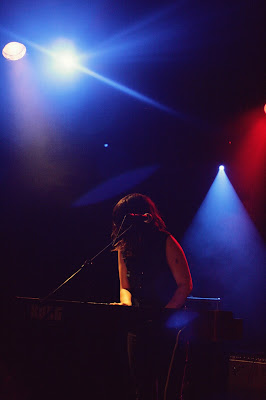When it comes to touring, I find more musicians focused with the “How,” “When,” and “Where” aspects but not enough of the “Why.” Of course, touring can be an incredibly important step in most artists’ careers but you should definitely take some time out to create solid goals and a definitive strategy before you decide when/where you want to hit the road. Why do we pick the target areas for touring that we do? Is it because we want to travel there? Because they are big cities? Because that’s what everyone else is doing?
If you want to build a tour strategy that makes sense for your music career, you’ll want to keep these things in mind:
What Is Your Goal?: Remember that goals should be SMART (Specific, Measurable, Achievable Relevant, and Timely). Touring should be a strategic part of your goals, not the strategy itself. For example, if your goal is to gain 1,000 new fans nationwide, you should have a plan that involves a publicity campaign, social media, building your email/contact list, follow-up, and perhaps involve a distributor as well as touring. You’ll want to carefully consider each region and have pro’s and con’s for certain markets, then follow up with a plan for each show. However, if you just want to “get new fans,” then perhaps a national tour isn’t required. Perhaps you should provide a strong focus in your region to build buzz before conquering new markets.
What Kinds of Resources Do You Have?: Remember, tours cost time and money so you’ll want thoughtfully factor this in. Is it better to play a city on the opposite side of the country once or twice a year or to be regularly playing your region throughout the year? If you invest your time/money on a tour now, you might not have those same resources later in the year. These things all go back to your goals. You might also find this article on How to Book Your Ban’ds Tour, Step-by-Step helpful.
Once you’ve thought the process some more, here some ideas on where you should be touring:
Locally: It’s always a good idea to play in your local area on a regular area in order to build your draw, meet touring acts, and stay on good terms with promoters. However, to prevent oversaturating your markert, try not to play your hometown more than once a month.
Regionally: Playing regional shows should be a huge priority for any aspiring artist. Over time, you’ll want to slowly expand your circle. For example, targeting all towns within a 200 mile radius for six months, then all towns within 400 miles, then 1,000 miles and so on. By staying fairly close to home, you can minimize your tour expenses while still building some momentum for your music in untapped areas. Regional touring is a great way to get press and make new contacts. Acts who have a strong following regionally usually get invited to perform with nationally touring acts. You’ll also be a strong contender for regional music festivals and command higher performance fees in areas where you have a proven, consistent draw. It’s also a good idea to focus on one region at a time (for example, the Northeast, then covering the East Coast, then the coast and the South, etc.) to gradually build your coverage.
Nationally: Frequent, consistent, national tours are important for a number of efforts. For example, if your goal is to perform at SXSW or to get some national press, national touring is a must (here’s an article with tips on booking SXSW). However, sustained national touring is often difficult to accomplish because of the amount of time and resources involved. Also, I would not recommend touring nationally unless you have a solid publicist working with you to help secure you press in each city that you perform at.
When considering a national tour, think about the markets that you are trying to perform and why. Smaller towns (sometimes referred to as secondary markets) are usually easier to book, provide more generous compensation, have more eager audiences, and will usually have better merch sales. Larger cities (or primary markets) can be more difficult to book (unless you have a proven draw), have more competition, and are more difficult to get fans to show up but they also can help build a stronger press opportunities, have more opportunities for in-store/radio support, and have more possibilities for networking. If it is your first few times out on the road, I recommend a mix of the two.
When you’re getting to plan your tour, remember to spend as much (or more) time planning it and thinking about your goals as you spend booking/inquiring. Remember that touring is only one aspect of your plan and needs to supplement or be complemented by all of your other efforts.




















































